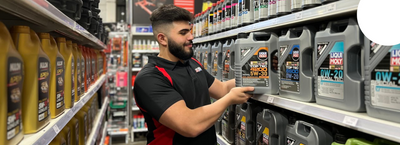Scratches and paint chips on your vehicle not only detract from its overall appearance but can also lead to further damage if left untreated. Knowing how to repair scratches and paint chips is an essential skill for every car owner. In this comprehensive blog post, brought to you by Universal Auto Spares, we will provide you with a step-by-step guide on how to repair scratches and paint chips on your vehicle, helping you restore its aesthetics and protect its resale value.
Assessing the Damage Before diving into the repair process, it's crucial to assess the extent of the damage. Scratches can range from shallow surface scratches to deep cuts, while paint chips can vary in size and severity. Evaluating the damage will determine the appropriate repair method and materials needed.
Tools and Materials Needed Gather the following tools and materials before starting the repair process:
- Clean microfiber cloths or towels
- Automotive soap or car wash solution
- Water
- Automotive primer (if required)
- Touch-up paint (matching your vehicle's color)
- Clear coat
- Fine-grit sandpaper (2000-3000 grit)
- Rubbing compound
- Polishing compound
- Paint applicators (brushes, touch-up pens, or small sponges)
- Masking tape
Repairing Scratches Follow these step-by-step instructions to repair scratches on your vehicle:
Step 1: Clean the Area Thoroughly clean the scratched area using automotive soap or car wash solution and water. Rinse and dry it completely before proceeding.
Step 2: Sand the Scratch (If Necessary) For deeper scratches, use fine-grit sandpaper (2000-3000 grit) to gently sand the scratched area. Sand in a circular motion, being careful not to apply excessive pressure. This helps smooth the surface and prepare it for touch-up paint.
Step 3: Apply Primer (If Required) If the scratch is deep or down to the bare metal, apply an automotive primer to ensure proper adhesion of the touch-up paint. Follow the manufacturer's instructions for application and drying time.
Step 4: Apply Touch-Up Paint Using a small brush, touch-up pen, or sponge applicator, carefully apply the touch-up paint to the scratched area. Apply thin layers and allow each layer to dry before applying the next. Repeat this process until the scratch is adequately covered.
Step 5: Apply Clear Coat Once the touch-up paint has dried, apply a layer of clear coat over the repaired area. The clear coat adds gloss and protection to the paint. Follow the manufacturer's instructions for application and drying time.
Step 6: Polish and Blend the Repair Using a polishing compound, gently buff the repaired area to blend it with the surrounding paint. This helps achieve a seamless finish. Polish the entire panel to ensure consistent gloss and appearance.
Repairing Paint Chips Follow these step-by-step instructions to repair paint chips on your vehicle:
Step 1: Clean the Area Clean the area around the paint chip using automotive soap or car wash solution and water. Rinse and dry it thoroughly before proceeding.
Step 2: Apply Touch-Up Paint Using a small brush, touch-up pen, or sponge applicator, carefully apply the touch-up paint to fill the paint chip. Apply thin layers and allow each layer to dry before applying the next. Repeat this process until the chip is filled.
Step 3: Apply Clear Coat Once the touch-up paint has dried, apply a layer of clear coat over the repaired chip. Follow the manufacturer's instructions for application and drying









